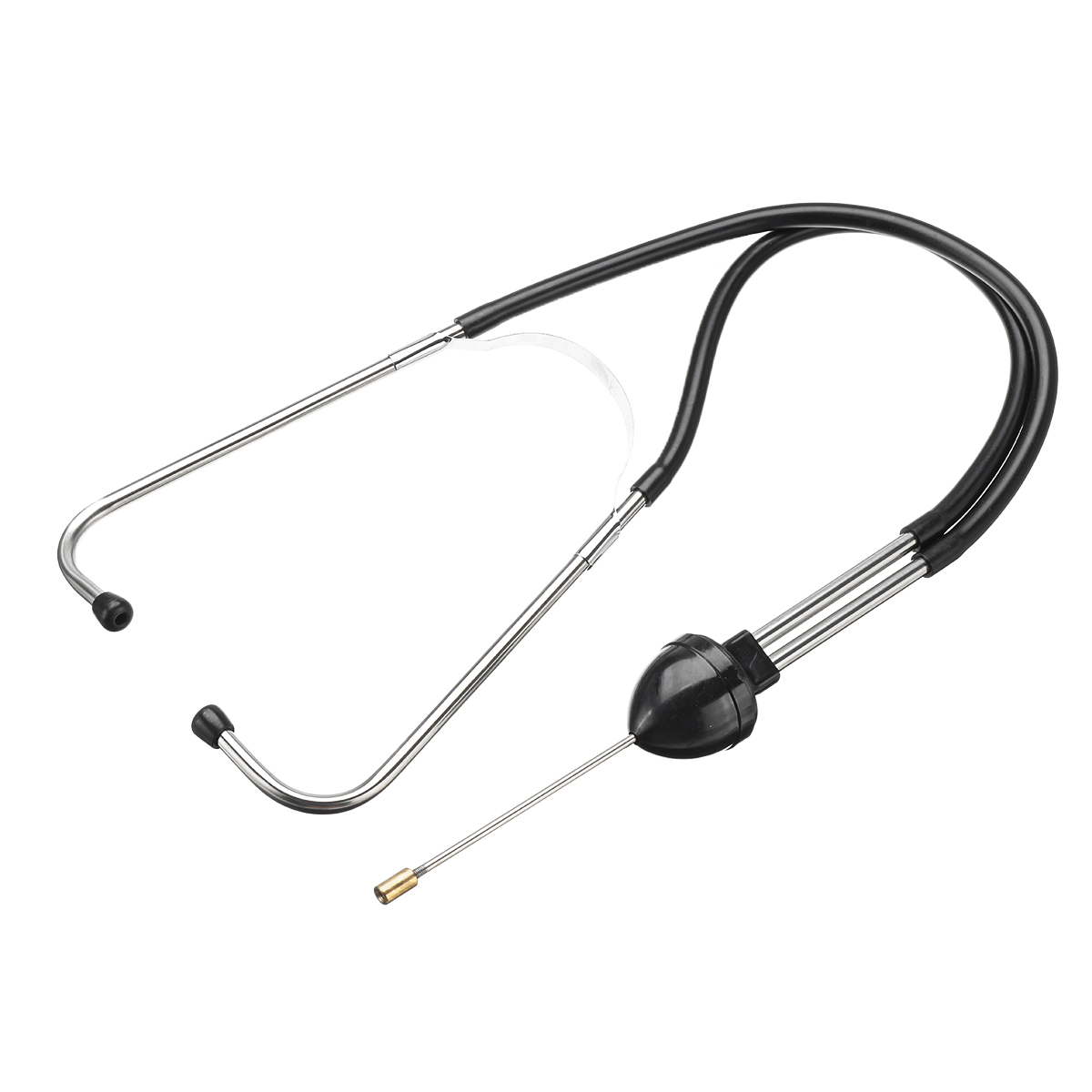
Car Cylinder Stethoscope Automobile Engine Abnormal Sound Judgment Mechanical Internal Noise Detection
Specification:
Detection noise frequency range: 10HZ--10KHZ
The length of the two probes: the long needle is 250 mm, the short needle is 80 mm, and the diameter is 4 mm;
Features:
- Quickly lock the abnormal noise source of the engine
- Determine abnormality by tracking the sound of water, oil, gas and steam flow
- Shockproof hand-held mechanism;
- Comes with a 25CM metal probe, with a screw port, can be connected in front of the original probe, in order to increase the scope of use.
- Scope of application
This stethoscope can be applied to all rotating and reciprocating machinery fields such as metallurgy, building materials, petroleum, chemical industry, textile, electric power, mining, motors, ships, automobiles, aircrafts, machine tools and various engineering machinery, heavy machinery. In particular, some large-scale equipment, complex and complex equipment, and long-term continuous operation of mechanical equipment require a stethoscope.
Applications
1. The product is suitable for all parts of the car, and can quickly monitor the abnormal sound parts.
2. The product can monitor various parts of the engine, bearings, motors, chassis and so on.
3. The product is suitable for maintenance technicians, repairmen, vehicle maintenance personnel, safety monitoring personnel, personal vehicle owners, etc.
4. The product is suitable for all kinds of mechanical equipment such as automobiles, ships, aircrafts, machine tools and so on.
5. Locate the collision and screams from the engine to the instrument panel;
6. Diagnose the rattling sound of the piston and the sound of gear wear.
Package Included:
1. Stethoscope host: 1 set
2. One probe 250 mm
Stethoscope is the most basic and necessary portable and simple instrument for checking vehicle failure. It can detect the impact vibration caused by the defects and failures of operating parts such as bearings, gears, valves, valve bodies, crankshafts, cylinders, gearboxes, car bodies, etc. while the machine is running. Vibration and noise detection are the most common methods used to determine the failure of rotating machinery components. Help maintenance personnel find the source of the problem, save time, and increase efficiency.







